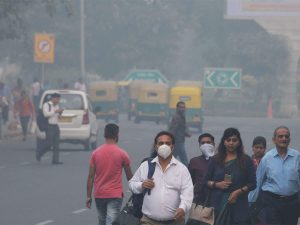Global Climate Risk Index 2021:

The international environmental think tank ‘Germanwatch’ released the Global Climate Risk Index 2021.
- This is the 16th Edition of the Index. It is published annually.
- Germanwatch, based in Bonn and Berlin (Germany), is an independent development and environmental organisation which works for sustainable global development.
- The Index analyses the extent to which countries and regions have been affected by the impacts of weather-related loss events (storms, floods, heat waves etc.).
- The impact is calculated in terms of fatalities and economic losses, both.
- The most recent data available for 2019 and from 2000 to 2019 were taken into account.
- The 2021 Index does not include data from United States of America.
- The Climate Risk Index clearly signals that repercussions of escalating climate change can no longer be ignored, on any continent or in any region.
- Impacts from extreme-weather events hit the poorest countries hardest as these are particularly vulnerable to the damaging effects of a hazard, have a lower coping capacity and may need more time to rebuild and recover.
- High-income countries are also getting severely impacted by climate change.
About 2021 Findings
- Mozambique, Zimbabwe as well as the Bahamas were the most affected countries in 2019.
- For the period from 2000 to 2019, Puerto Rico, Myanmar and Haiti rank highest.
- Storms and their direct implications- precipitation, floods and landslides, were one major cause of losses and damages in 2019.
- Of the ten most affected countries in 2019, six were hit by tropical cyclones. Recent science suggests that the number of severe tropical cyclones will increase with every tenth of a degree in global average temperature rise.
- Eight out of the ten countries most affected by the quantified impacts of extreme weather events in 2019 belong to the low- to lower-middle income category. Half of them are Least Developed Countries.
- India has improved its rankings from last year. It is ranked 7th in the 2021 Index as compared to 5th in 2020 Index.
- The Indian monsoon lasted a month longer than usual in the year 2019, with surplus rains causing major hardship.The rain was 110% of normal, which is the most since 1994.
- The floods caused by heavy rains were responsible for 1800 deaths and led to displacement of 1.8 million people.
- Overall, 11.8 million people were affected by the intense monsoon season and the economic damage caused was estimated to be US$ 10 billion.
- India was hit by a total of 8 tropical cyclones. Of which, Cyclone Fani (May, 2019) caused the maximum damage.
- The Himalayan glaciers, the coastlines, and the deserts in India have been severely affected by global warming.
- The Report also points to an increase in the number of heat waves, increased intensity and frequency of cyclones and an increased rate of melting of glaciers in India.




